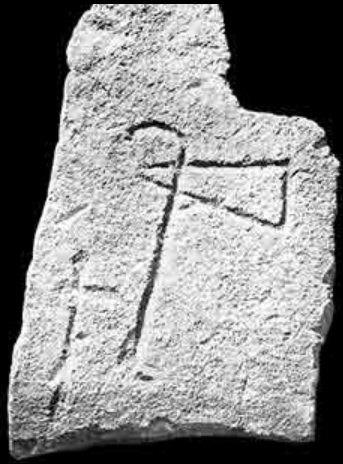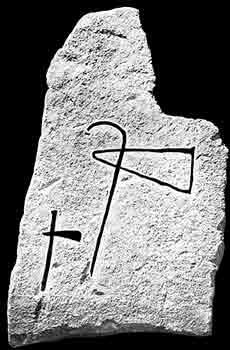- Home
- Discover the megaliths of Morbihan
- Art reflects the sacred
- Rock art
- The axe
Two "handled axes" on a small slab from Mané-Kerioned at Carnac.
Two "handled axes" on a small slab from Mané-Kerioned at Carnac.
For the farmers, who had learnt to exploit the woodlands that surrounded them, the axe was a vital tool. It is no wonder then, to see this sign appear frequently and under various shapes and forms.
The tool must have quickly symbolized the way to dominate and destroy the plant world. The axe has been associated with thunder in many popular traditions since Antiquity (the Greek ceraunia).
On the Armorican megaliths, the axe appears either handled (representations can be realistic or approximate) or reduced to its most meaningful part, that is the polished stone head (which shows how highly symbolical such representations are).
The axe and the primitive plough coulter used to be mistakenly associated. Polished stone axes were used to work wood, whereas the few Neolithic stone ard-shares were of a completely different type. The 'axe-plough' sign (known as such since Le Rouzic) can not be identified with a ploughing implement. Such a picturesque name is only a way to qualify a somewhat mysterious carving (which might be a formal representation of the tool).

